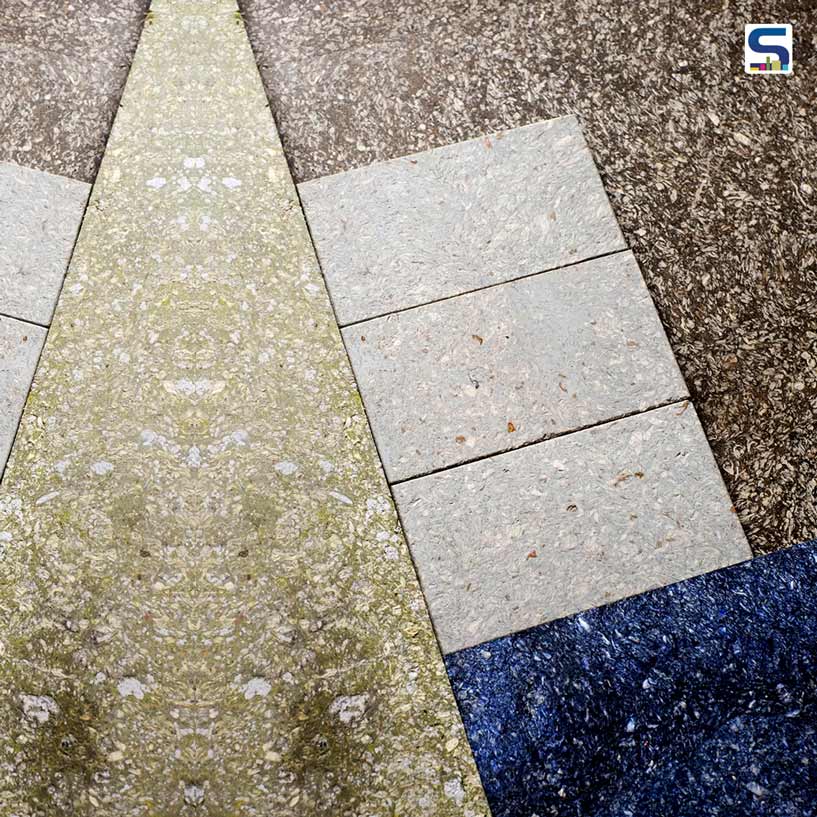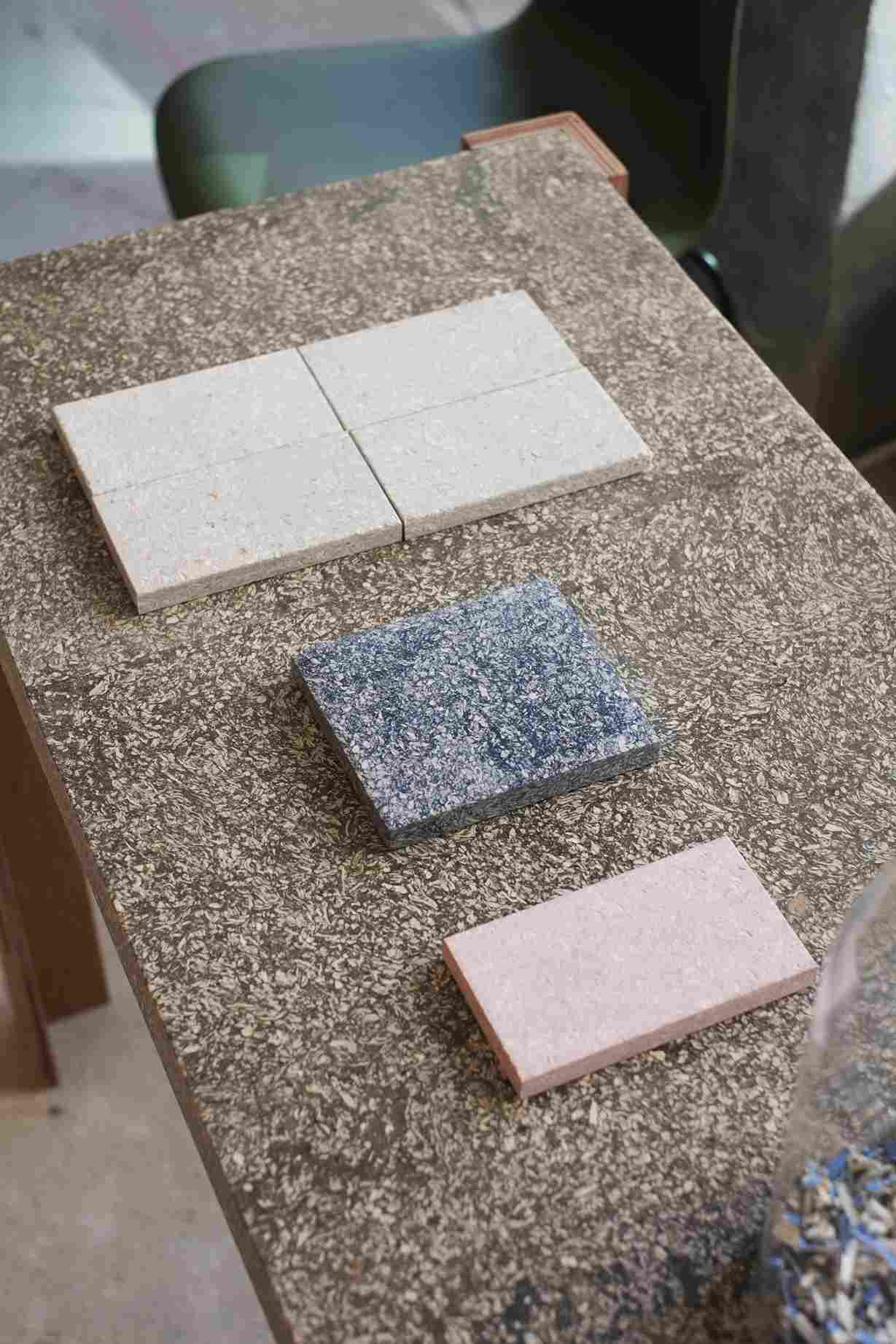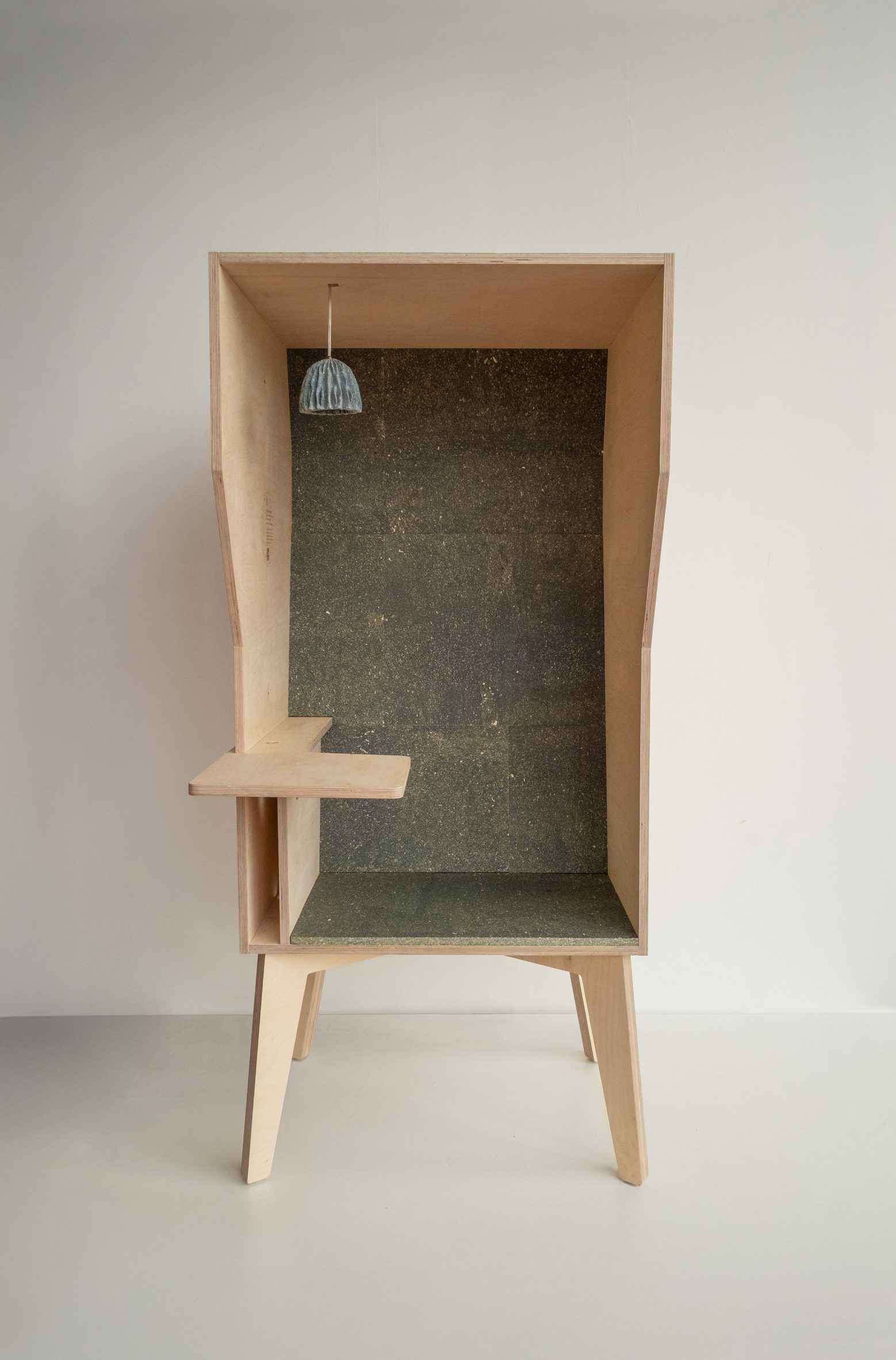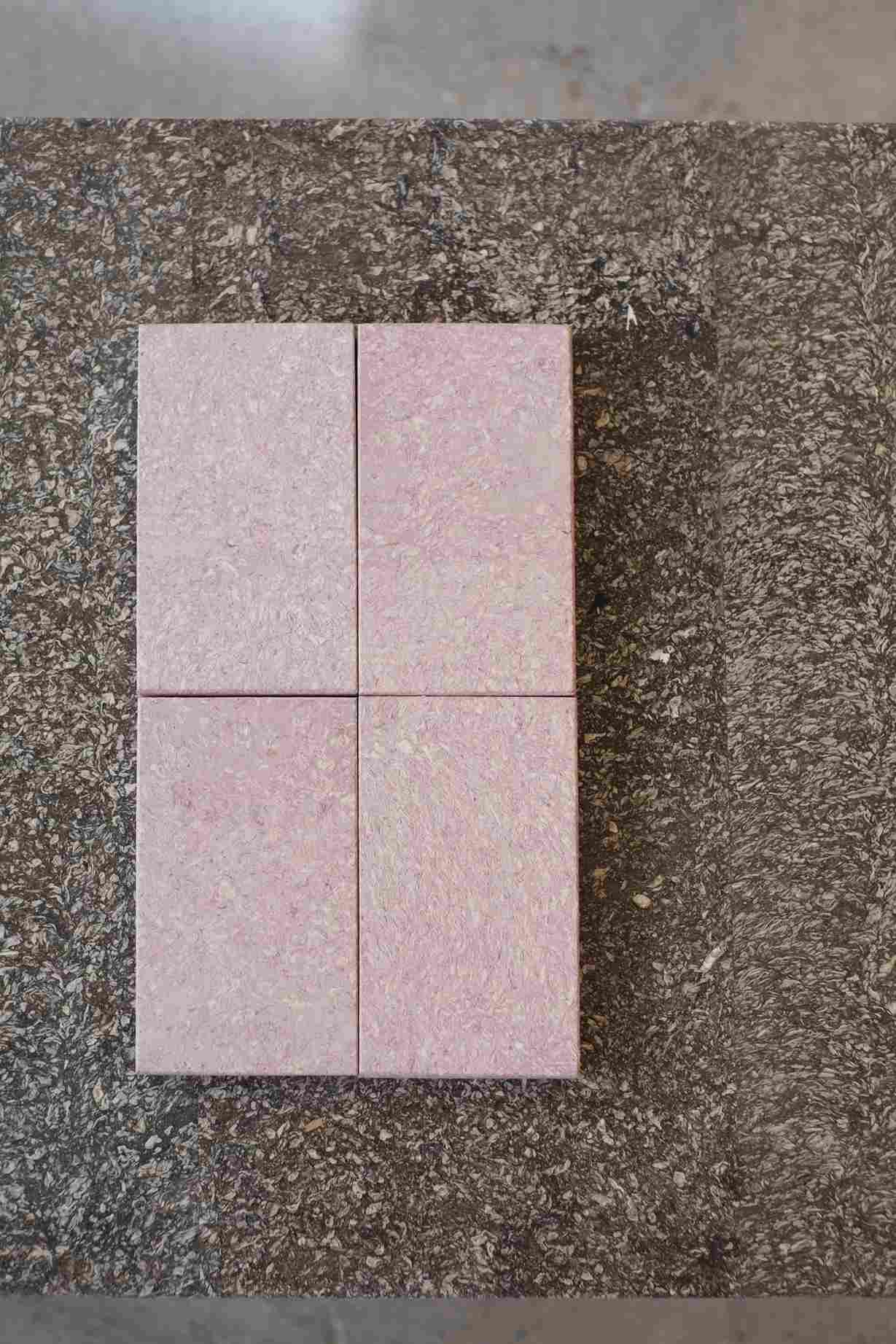
In London, where takeaway coffee culture thrives, millions of disposable cups are used and discarded each week, creating an environmental challenge that has long troubled waste management systems. Design practice Blast Studio has risen to this challenge with Cupsan, an innovative biomaterial that transforms used coffee cups into durable boards and objects suitable for interior design. What started as an experimental material supporting mycelium-based projects has now evolved into a commercial venture. SURFACES REPORTER (SR) shows how today’s waste can be tomorrow’s building block with a practical alternative for designers.

The boards can be cut, nailed, drilled, varnished and glued much like conventional timber, and their tolerant surface allows for sanding, patching or refinishing to extend usability even further.
From coffee waste to craft
Cupsan features a warm, speckled texture that merges the natural appeal of stone and earth. Structurally robust and visually distinctive, it comes in high-density boards similar to MDF and can also be moulded into various forms, including furniture and lighting components. Initially, Blast Studio presented Cupsan as a by-product of their work with mycelium, the root structure of fungi which is often used in sustainable design research. At that time, Cupsan served merely as a substrate on which the mycelium could grow. However, over time, the designers realized that the pulp derived from the used coffee cups had remarkable potential beyond acting as a support material.
When co-founders Paola Garnousset and her team relocated from Paris to London in 2019, they were struck by the sheer volume of people carrying takeaway coffee cups. Many of these were bound to go to landfill due to the challenge of recycling composite cups lined with plastic. The team then started using these single-use cups as an accessible, carbon-rich substrate for their mycelium experiments. However, after extensive trials, they found that focusing on mycelium limited the scalability of their work.

Each square metre of Cupsan is made from approximately 840 coffee cups, effectively diverting them from landfill while providing designers and builders with a sustainable alternative to wood-based composites.
For a responsible design future
The turning point came when their partner, the waste management company First Mile, delivered a full tonne of discarded coffee cups to their studio. The sheer magnitude of the problem became apparent, which was just a tiny fraction of the estimated 30,000 tonnes of coffee cup waste generated in the UK each year. Realising that a meaningful impact required engaging directly with the industry, Blast Studio shifted its focus from experimentation to full-scale manufacturing. By doing so, they not only addressed a pressing waste issue but also developed a material with genuine architectural and design potential.
To produce Cupsan, the design team first shreds and sterilises the discarded cups, separating and removing the plastic lining in the process. The resulting paper pulp is blended with a natural, plastic-free binder made from a bio-based formula comprising starch and plant-derived gums. Once this mixture cures, the fibre bonds form a dense, textured mass that becomes the finished material. Each square metre of Cupsan is made from approximately 840 coffee cups, effectively diverting them from landfill while providing designers and builders with a sustainable alternative to wood-based composites. The boards can be cut, nailed, drilled, varnished and glued much like conventional timber, and their tolerant surface allows for sanding, patching or refinishing to extend usability even further.

It comes in high-density boards similar to MDF and can also be moulded into various forms, including furniture and lighting components.
A defining feature of Cupsan is its visual and tactile richness. The natural composition produces subtle tonal variations, which can be enhanced through the addition of pigments, usually ochres, charcoal, or chalk. Blast Studio has even experimented with colouring the material using other waste streams, including brick dust to expand the range of aesthetic possibilities. In one striking example, red coffee cups from popular UK cafe chains such as Costa Coffee and Gail’s were repurposed without pigment, resulting in pastel pink panels that preserve the origin of their material story.
Beyond boards, the studio is now exploring ways to repurpose the recovered plastic linings, which make up for about five per cent of each coffee cup into small, durable design pieces. This aligns with the studio’s philosophy of circularity. They have also collaborated with clients to create custom Cupsan applications derived from specific waste sources. For instance, at Happy Sky Bakery in central London, they partnered with TMTO Architecture to craft lampshades and wall panels made from the bakery’s own coffee cup waste, turning a disposal problem into a tangible part of the cafe’s interior identity.
Image credit: Blast Studio